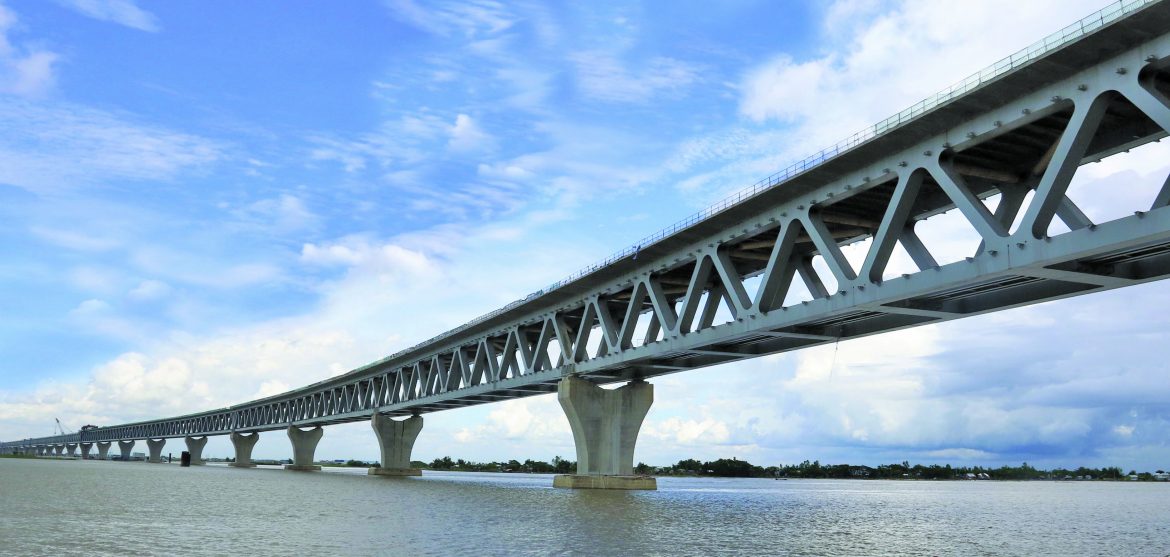The projects are being implemented in full swing after overcoming the first two phases of Covid-19 crisis. The government plans to start commercial operation of the first Metrorail section of Bangladesh from Uttara to Agargaon in December this year. Besides, the Padma Bridge will be inaugurated in June, writes Siam Tanjil Haque
Bangladesh has made huge strides in the work of the much-talked-about Padma Bridge and the Metro Rail of late. Work on the Ruppur Nuclear Power Plant, Rampal Power Plant also is in full swing. Other than these, the country has some other mega projects that, when finished, will boost the economy and change the face of the country. These widely discussed projects are Padma Bridge and Padma Rail Link, Metro Rail, Chattogram-Cox’s Bazar Rail Link, Ruppur Nuclear Power Plant, Matarbari Coal-Fired Power Plant and Rampal and Payra Deep Sea Port. Such mega projects will increasingly brighten Bangladesh’s image across the world. All these are priority projects of the government. By prioritizing these mega projects, the country is basically planting seeds for sustainable future. Sheikh Hasina being the Prime Minister has her own supervision all the time. The country is thus on the verge of reaping the benefits from these developmental projects.
In the interest of development of the country, at present, the government is giving utmost importance to the implementation of these mega projects of dreams. The government wants to complete these projects as soon as possible to ensure financial progress as per the targets including poverty alleviation and employment. The economic and social development of the country is largely dependent on these projects.
After the absolute victory in the ninth parliamentary elections and the formation of the Awami League government in 2009, massive development activities started all over the country. As the government remained unchanged in the second term, the development activities remained operative which never happened before. Earlier, no government remained for the second term in the country. With this new occurrence the running government had the opportunity to go forward with their plans and the flow of development activities gained more momentum.
The projects are being implemented in full swing after overcoming the first two phases of Covid-19 crisis. The government plans to start commercial operation of the first Metrorail section of Bangladesh from Uttara to Agargaon in December this year. Besides, the Padma Bridge will be inaugurated in June.
PADMA BRIDGE PROJECT
One of the most priority projects of the government is the Padma Multipurpose Bridge project. Till February 2022, the total progress of Padma Bridge project is 90.50 percent. Under the project, Tk 26,247.59 crore has already been spent. The total cost of the project has been estimated at Tk 30,193.39 crore. The total length of the bridge is 6.15 km. A total of 41 spans sits on 42 pillars of the two-storey bridge. Vehicles and train will run on this bridge. The work of the infrastructure of the Padma Bridge is almost finished, the final step of the work is now in full swing to open it for traffic. Water proof layer is being given on the upper side of the bridge. The top layer will be wrapped in carpet. These layers will prevent water from entering the bridge. This will ensure the lifespan of the bridge for hundred years.
However, the Padma Bridge project was wrapped in a lot of drama and tension. Prime Minister Sheikh Hasina decided to build the Padma Bridge with our own funds after many incidents of corruption allegations made before the World Bank released the money. At that time, the decision to build the Padma Bridge with our own funds brightened the image of Bangladesh all over the world. Though, it was a big challenge for the country to build the bridge. The challenge of building this bridge with no financial support and by own funding is now on the verge of completion. On June 17, 2014, the government signed an agreement with China’s Major Bridge Engineering Construction Company, a Chinese constructor, for the construction of the main bridge. In November 2014, an agreement was signed with Sinohydro Corporation, another Chinese company for river management. Besides, local constructors have constructed toll plazas, connecting roads and infrastructure at both the ends. Then the dream of the Padma Bridge began to take shape in early 2016. On September 30 of that year, the first span of Padma Bridge was laid on the 37th and 38th pillars. Starting from 2016, 41 spans are now sitting on the Padma Bridge after 5 years of effort. The last 41st span was installed on 10 December. As a result, Mawa of Munshiganj and Jajira part of Shariatpur have now been added.
If the Padma Multipurpose Bridge project is implemented, the distance and time of communication between the south-western part of the country and the capital will be reduced. The per capita income (GDP) will grow by about one percent.
METRO RAIL PROJECT
The construction work of the first metro rail in Bangladesh is running fast to free the city dwellers from traffic jams. The 20.10 km long project will be constructed from Uttara third phase to Kamalapur. The work of 11.63 km section from Diabari of Uttara to Agargaon of this project is almost completed. The entire route from Uttara to Motijheel is connected by viaduct. As a result, the road work has been completed.
Dhaka Mass Transit Company Limited (DMTCL) announced that, Metrorail will be launched by December 2023. According to DMTCL sources, the overall average progress of the construction work of MRT-6, the first metro rail in Bangladesh, is 74.04 percent. The progress of construction work of Agargaon section from the third phase of Uttara scheduled for first phase construction is 90.06 percent. The progress of construction work from Agargaon to Motijheel section scheduled for second phase the construction is 63.06 per cent. Electrical and Mechanical Systems, Rolling Stock (Rail Coach) and Depot Equipment Procurement Progress is 60.91 percent. From Motijheel to Kamalapur, Social Study, Household Survey, Land Acquisition, Rehabilitation Planning, Environmental Impact and Basic Design have been completed. Detailed design and land acquisition are currently underway.
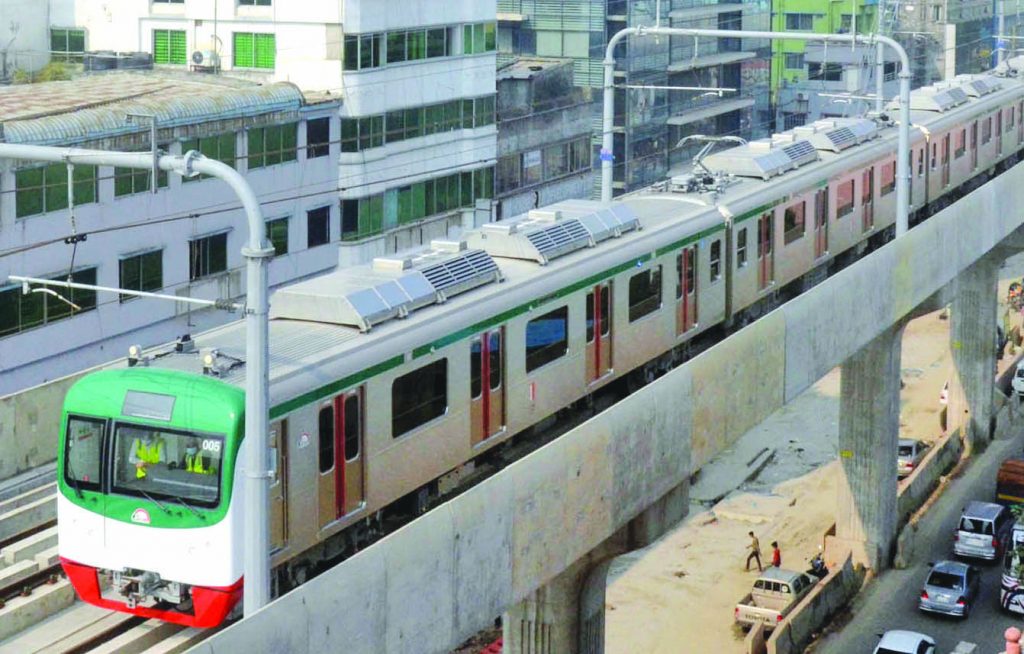
Metrorail will run with 24 sets of trains. Each train will have six cars. 24 sets of trains are being purchased for Metrorail. Train sets with two engines and four coaches on either side are being made in Japan. Five sets of trains have already been prepared, the first of which may arrive in the country on April 23 previous year. Metrorail trains are being built by the Japanese company Kawasaki-Mitsubishi. In all, the price of 24 sets of trains is Tk 3,206 crore 42 lakh. After bringing these trains to Bangladesh including customs and VAT, the total cost will be Tk 4,256.34 crore. The trains will have DC-1500 voltage power supply system, Stainless steel body and vertical seats. Each train will have two wheelchairs. Each air-conditioned bogie will have four doors on each side. Each train will have a passenger capacity of 1,638 with safety standards of Japanese standard. There will be smart card ticketing system for paying rent.
Work on the Metrorail project began in June 2016. So far, the overall progress of the project is 56 percent. The total cost of the project is Tk 33,472 crore. Of this, Tk 16,595 crore is being provided by Japan International Co-operation Agency (JICA) and Tk 5,400 crore by the Government of Bangladesh.
The train will run at a speed of 100 kilometers per hour with passengers. Dhaka Metro Rail is capable of transporting 60,000 people per hour. Metrorail will reduce the travel time from Uttara to Motijheel from about two hours to just 40 minutes.
| Project Name | Type | Estimated finishing time | Cost |
| Padma Bridge | Communication Infrastructure | 2022 | Tk 30,193.39 crore |
| Metro Rail | Communication Infrastructure | 2022 | Tk 33,472 crore |
| Padma Rail Link | Communication Infrastructure | 2024 | Tk 39,246 crore |
| Ruppur Power Plant | Power Project | 2024 | Tk 1,13,092 crore |
| Rampal Power Plant | Power Project | 2023 | Tk 16,000 crore |
| Matarbari Power Plant | Power Project | 2023 | Tk 36,000 crore |
| Payra Deep Sea Port | Communication Infrastructure | 2024 | Tk 4,516.75 crore |
| Karnaphuli Tunnel | Communication Infrastructure | 2022 | Tk 10,374 crore |
PADMA RAIL LINK PROJECT
Padma rail link project is going ahead with the funding of China. The rail link will be established below the much awaited Padma Bridge through construction of 169 km broad railway line from Dhaka to Jessore. This railway will establish the first railway connection in 23 districts of the southern part of the country. The total cost of the project will be Tk 39,246 crore. Of this, China’s debt is Tk 21,036 crore. The rest of the funding will be met from the government treasury.
In October 2016, Prime Minister Sheikh Hasina inaugurated the construction of Padma Bridge and Rail Link in Mawa. Although all the work was supposed to be completed by July 2024, Ministry of Railways proposed to increase the time and cost. According to the Ministry of Railways, the Mawa-Bhanga section was supposed to be started along the road of the Padma Bridge, but now the target has been set for December 16 this year. The other two parts are targeted to be completed by 2023.
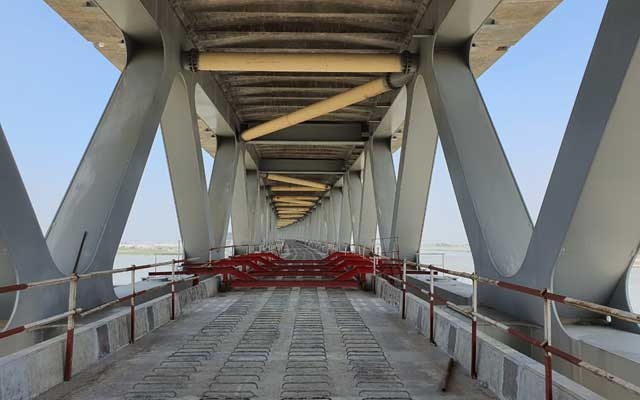
The train will run through the span on the lower floor of the two-store Padma Bridge. Vehicles will run on the four-lane road above. The rail link to Mawa is being taken by air. From there the railway will gradually descend and enter the lower floor of the bridge. At the same place, the road will gradually go up through the bottom of the railway line. More than 90 percent work of Padma Bridge has been completed. Officials said that the traffic on Padma Bridge will start in June 2022. The government aims to run trains across the Padma Bridge from the day it is commissioned. For this, the Padma Bridge Rail Link project is being implemented at a cost of Tk 39,246 crore. China Railway Group Limited, a designated contractor of the Chinese government, is working on the project in GTZ system.
A 169 km broad gauge railway will be constructed from Dhaka to Mawa and from there to Jessore via Padma Bridge. Apart from this, 43.22 km loop and siding line and 3 km double line will be constructed. Under the project, 14 new stations will be constructed and infrastructure of six stations will be developed. Of the 131 km from Dhaka to Jessore, 51 km embankment, 31 major bridges, 33 culvert-underpasses, two station buildings, viaduct piles, piers, slippers and CC blocks for river training work are under construction. Construction progress of Dhaka-Mawa 46, Mawa-Bhanga 74 and Bhanga-Jessore section is 41 percent. The overall progress of the project is 50.50 percent. Financial progress of the project is 51.82 percent.
Rail connectivity of the south-western part of the country will be established with the capital through the Padma Rail Link. It will connect Dhaka, Narayanganj, Munshiganj, Shariatpur, Madaripur, Faridpur, Gopalganj, Narail and Jessore districts.
RUPPUR POWER PLANT PROJECT
In December 2015, the government signed an agreement with Russia’s Atomstroy Export to build a 2,400 megawatt nuclear power plant at Ruppur in Pabna. The implementation period of the agreement is seven years. The cost of implementation of this project is Tk 1, 13,092 crore. The first unit of the power plant is scheduled to be commissioned in 2023 and the second unit in October 2024.
The project is being constructed at Ruppur village in Ishwardi Upazila of Pabna, 200 km northwest of the capital Dhaka. The project is located on the river bank next to the House Bridge and Lalan Shah Bridge over the Padma River.
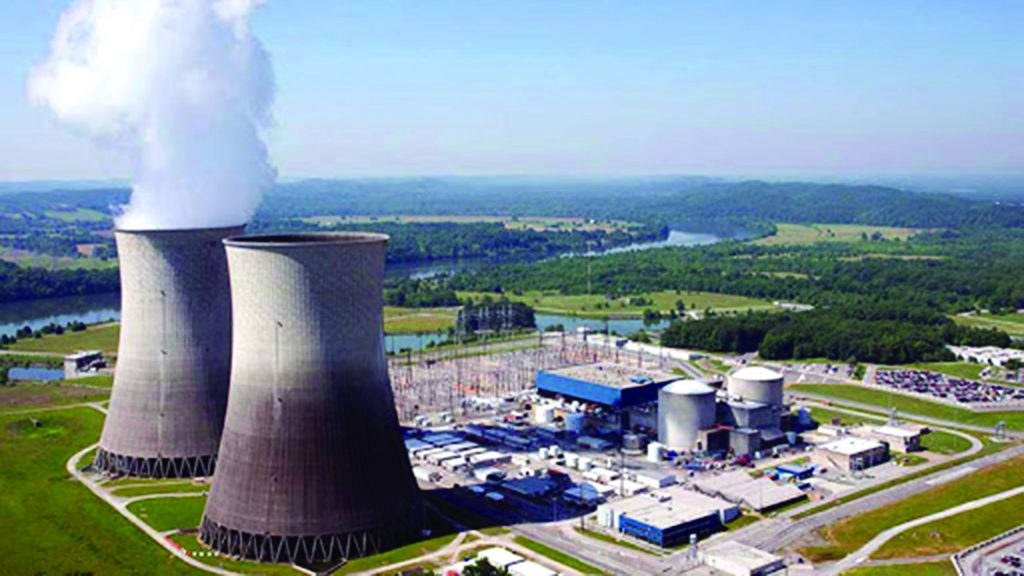
It will be the first nuclear power plant in the history of the country. The nuclear power plant is being constructed at Ruppur with the cooperation of Russia, where there will be two units. The two units will generate 2400 MW of electricity at 1200 MW each. The total progress of the project is 40.34 percent. In the meantime, the total expenditure under the project has been Tk 43,097 crore. The project will be completed by December 2025.
As a single project, it is the largest project in Bangladesh. The government says the project is environmentally friendly and financially viable. The project will last for about 100 years after the start of power generation. 16 lakh families of the country will get electricity facility from this power plant. The project will employ 250,000 people. Through this project, we are gaining membership of the Earth’s Atomic Club. The Ruppur nuclear project will play a huge role in the country’s economy. The project will generate electricity at low cost. Nuclear power projects generate much lower costs to generate electricity through waste and gas. It will also save electricity for consumers. The country’s exports will increase. The country’s exporters will be benefited in the export market after construction of the Power Plant.
RAMPAL POWER PLANT PROJECT
Rampal Power Plant Project is one of the most talked about and criticized thermal power projects of recent times in the power sector of Bangladesh. The power plant is being built as a joint venture between Bangladesh and India. The cost is Tk 16,000 crore. Boundary wall, slope, land development and office cum residential building are hundred percent completed. Other works are going according to plan. Work on the Power Plant project started in July 2014. It is expected to end in June 2023.
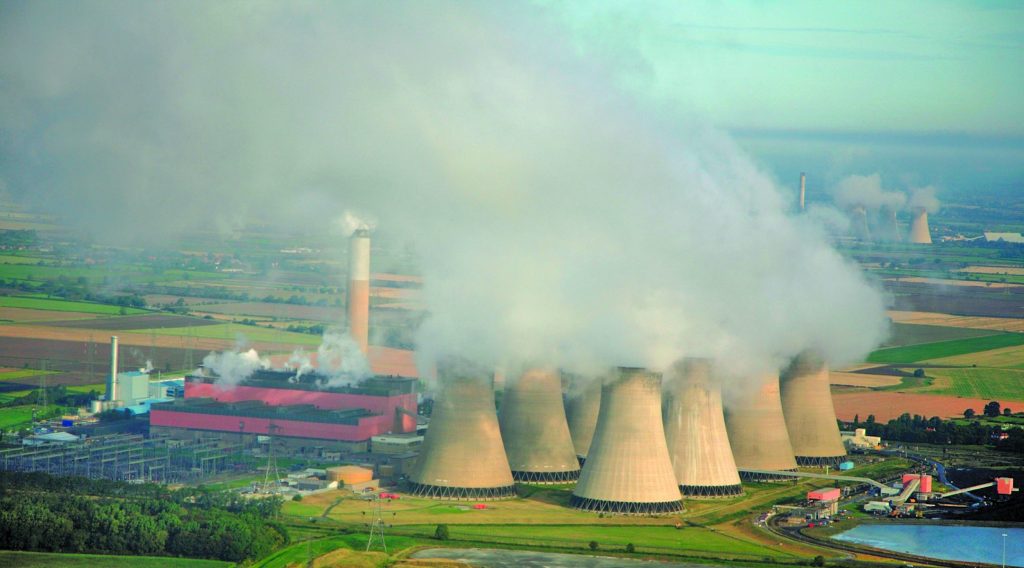
The 1320 MW power plant is located in Rampal Upazila of Bagerhat district in Khulna division. Bharat Heavy Electricals Limited (VEL) will construct this power plant. The main source of coal to be used in this Bangladesh-India joint venture power plant will be imported from India. Best quality coal will be used here. Apart from India, coal will be imported from several countries including Australia, Indonesia and South Africa. Power plants are being constructed at Rampal using ultra-super critical technology, where the coal burning efficiency of a typical power plant is 26%, while the efficiency of ultra-supercritical power plant is 42-43%. In other words, it is possible to get one and a half times more electricity by burning the same amount of coal from this power plant.
The height of the chimney of Rampal Power Station will be 265 meters, the highest, so that the carbon dioxide emitted through the chimney will be limited to 1.6 kilometers (buffer zone) of the power plant. The government has confirmed that the concentration (ppm) of other harmful gases will be much lower than the levels set by the World Health Organization (WHO) and other international organizations. In addition, the use of the latest technology available to prevent pollution will be ensured. 2 lakh trees will be planted to create green belt in the project area including introduction of round-the-clock environmental monitoring system.
If 2600 MW of electricity is added to the national grid from this project, its impact will be huge. According to economists, if this project is completed, the per capita income (GDP) will increase by one percent.
MATARBARI POWER PLANT PROJECT
The government has taken a master plan to build a power hub at Matarbari in Maheshkhali Upazila of Cox’s Bazar district. Therefore, not only the power plant, the whole area will be developed as a modern industrial area. Although the construction of this power plant was supposed to be completed by December 2023, an additional three and a half years have been requested till December 2026. The project is being constructed on 1,414 acres of land in Matarbari and Dhalghata Union.
In August 2015, the government approved a project worth Tk 36,000 crore to build a power plant at Matarbari. Japan International Development Agency (JICA) will provide Tk 29,000 crore for the project. The remaining Tk 5,000 crore will be provided from the government’s own funds. Other required funds will be provided by the project implementer and proprietor Coal Power Generation Company Bangladesh Limited (CPGCBL). The total progress of the project is 70.80 percent. In the meantime, the total cost under the project has been Tk 16,574 crore.
The coal-fired power plant will be built using ultra-super critical technology. Under the project, two steam turbines with a capacity of 600 MW electricity production power, cooling water station, and 265 meter high chimney and water purification system will be installed. A 6 km naval channel will be constructed in the river for importing coal. Besides, jetty will be constructed for loading and unloading of coal. Burners will be installed to reduce the amount of nitrous oxide in the power plant and de-sulfurization method will be used to prevent sulfur-dioxide generation to avoid pollution.
In order to build a coal-fired power plant in this remote area of Maheshkhali, Japanese Constructor Company started its main work in 2016. The first phase will generate 1,200 megawatts of electricity on 1605 acres of land. If two more units are constructed later, it will generate 2,400 MW of electricity.
If implemented, the project will contribute to standard, reliable and energy efficient power generation. It will also play an important role in the development of the socio-economic condition of the country. If all goes well, this part of the country’s first energy hub will be able to produce in just three years.
PAYRA DEEP SEA PORT PROJECT
Among the mega projects of the government, the progress of construction of Payra deep sea port project is good. In the meantime, the activities of the port have started moderately. The total progress of the project is 63 percent. The project has so far cost Tk 3,084 crore. The total cost of the project has been estimated at Tk 4,516.75 crore.
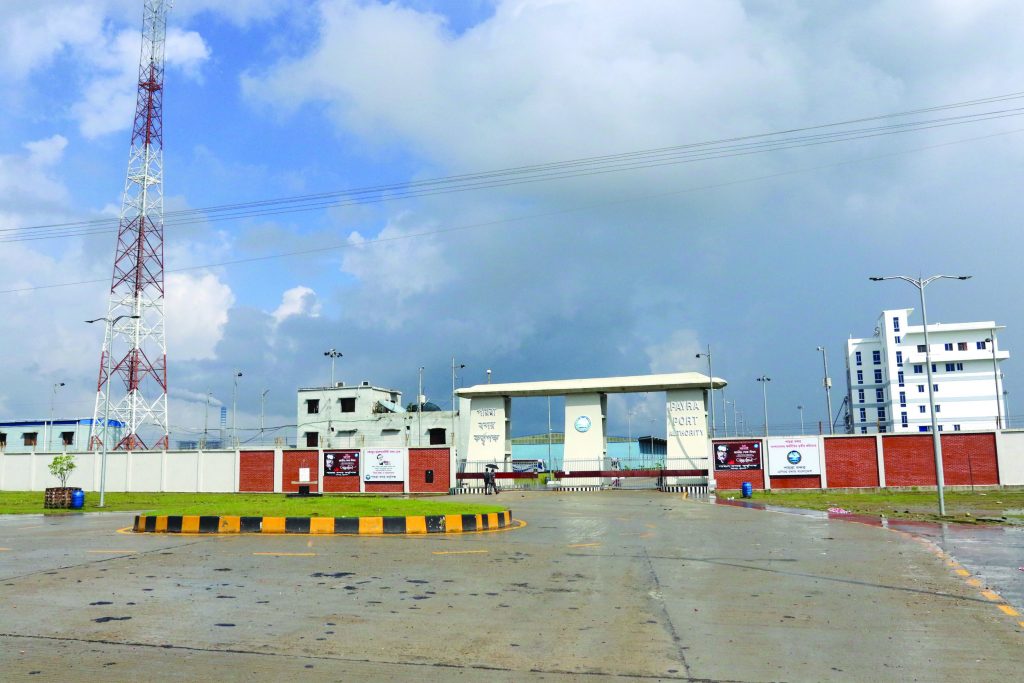
Although the project was supposed to be completed in June 2024, it was suddenly said in April last year that, the deep seaport was not being built in Payra. State Minister for Shipping Khalid Mahmud Chowdhury informed the media about the decision of the government. He spoke of the various complications as the cause. The distance of deep sea from Payra port through Ramnabad channel is about 75 kilometers. Every year huge silt accumulates in this channel. In that case, hundreds of crores would have to be spent every year in the dredging sector to keep the channel running. State Minister also said that, it is very difficult to increase the depth of the channel from 14 to 15 meters through capital dredging and to maintain it.
The people of Barishal-Patuakhali and the southern region were disappointed with this decision of the government. Payra deep sea project come to a halt, so did everyone’s dream around the deep sea port. Thousands of crores have been invested by various private and privately owned companies around this port comes under threat. Everyone assumed that there was no future for Payra sea port.
But, the seaport of Payra has begun to prove that the light of hope has not been extinguished. Sea-going ships are coming to this port regularly. The crowd is growing day by day. Increasing revenue. Moreover, almost all the development plans taken by the government around Payra sea port are continuing. Only the word ‘deep’ is omitted.
The Payra Seaport Authority Act was passed in the National Assembly in November 2013. After the acquisition of 48 acres of land in two phases, the construction of the port started. At the end of 2019, after the initial phase of the work, the first imported goods arrived at the port. From then on, the Payra sea port did not have to look back. As the third seaport of the country, 160 foreign ships have anchored here in two years. The port has so far earned Tk 350 crore through unloading of goods.
The country’s economy will be boosted if Payra deep seaport is introduced. Large ships will be able to pass through the wide channel of Payra. Payra Port will play an important role in expanding the industrial sector, creating new jobs, expanding the shipbuilding industry, providing food grains in the southern districts, establishing regional transit facilities and economic corridors as well as exploiting the opportunities of the Blue Economy.
KARNAPHULI TUNNEL PROJECT
Plans have been made to make the port city of Chattogram similar to China’s Shanghai province. As part of this, construction work of Karnaphuli Tunnel also known as Bangabandhu Sheikh Mujibur Rahman Tunnel is in full swing at Patenga and Anwara under Karnaphuli River. Already 35 percent of the work has been completed. If the current pace of work can be maintained, the work of this project will be completed within the stipulated time of December 2022.
Construction of connecting road from Shikalbahar Waii junction to Anwara Sadar and Kalabibir Dighi on the southern bank of Karnaphuli River is in progress. Existing roads are being expanded to form tunnel connecting roads.
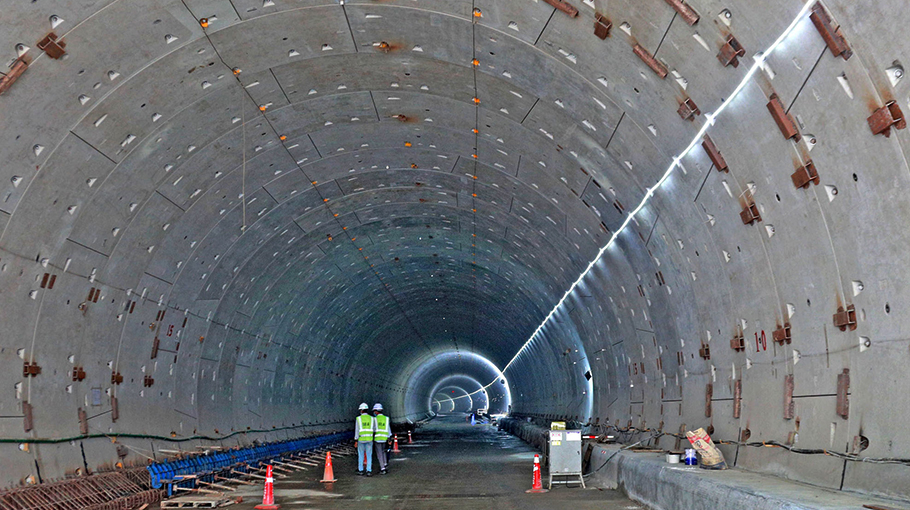
Our neighbor India has land tunnels, but Bangladesh is the first SAARC country in the subcontinent to construct tunnels under the sea or river.
In June 2014, a Memorandum of Understanding (MoU) was signed with China to set up a tunnel in Bangladesh. One year later, on June 30, 2015, a trade agreement was signed between the two sides in the presence of China’s Road Transport Minister Yang Chuangtang. In October 2016, Chinese President Xi Jinping officially inaugurated the project. Exim Bank of China signed the loan agreement on November 8, 2016. On 24 February 2019, Honorable Prime Minister Sheikh Hasina inaugurated the work of the tunnel.
The government of Bangladesh is providing financial assistance of Tk 4,461.23 crore for this project constructed at a cost of Tk 10,374 crore. Exim Bank of China is providing the remaining Tk 5,913.19 crore for the project, which will have to be paid by Bangladesh at 2 percent interest rate. Although the total length of the tunnel is 9.39 km, the length of the main tunnel is 3.32 km. The tunnel has two tubes with a diameter of 10.60 meters, each of which is 2.45 kilometers long.
The Chattogram metropolis on one side and Chattogram-Cox’s Bazar highway on the other are going to be connected through this tunnel.
As a result of construction of Karnaphuli Tunnel, modern communication system will be developed between Dhaka-Chattogram and Cox’s Bazar and connection will be established with Asian Highway. The Karnaphuli Tunnel will have a profound impact on the economic development of the country, including the elimination of unemployment through the overall facilitation of communication system, modernization, development of industries and development of tourism industry.
1981 to 2022. Bangladesh is in its fifty one years. From where Bangladesh has now completely turned around. Bangladesh has already become a role model as a developing country. These projects will accelerate the development of the country. Although work of these projects has been temporarily halted due to the Covid-19 pandemic, now it is currently running in full swing. One of the targets of the government is to complete the work of these projects on time. Therefore, the highest priority is being given to the implementation of these dream mega projects. Necessary funds have been also allocated for these.
Besides, these mega projects a new Bangladesh is being formed through the implementation of projects like, Dhaka-Chattogram Express Railway, Moheshkhali LNG Terminal, Dohazari-Ghumdhum dual gauge track, Shahjalal International Airport extension, Bus Rapid Transit (BRT), four lane road to connect North to Dhaka and Jamuna Railway Bridge, deep seaport in Sonadia. Experts say that if the continuity of development is maintained in this way, the face of Bangladesh will change completely after 15 years.
Such big projects are necessary to attract investment in the country. If these projects are implemented, the gross domestic product (GDP) of the people will also increase along with the growth of the country. There will be speed in trade and commerce, there will be opportunities for employment.
The motto of a famous song is, ‘The sky has touched the ground.’ The sky may not touch the ground, but the ‘impossible’ dream that the people of the country once dreamt is now about to see the rightful reality of fruition through implementation these mega projects.

